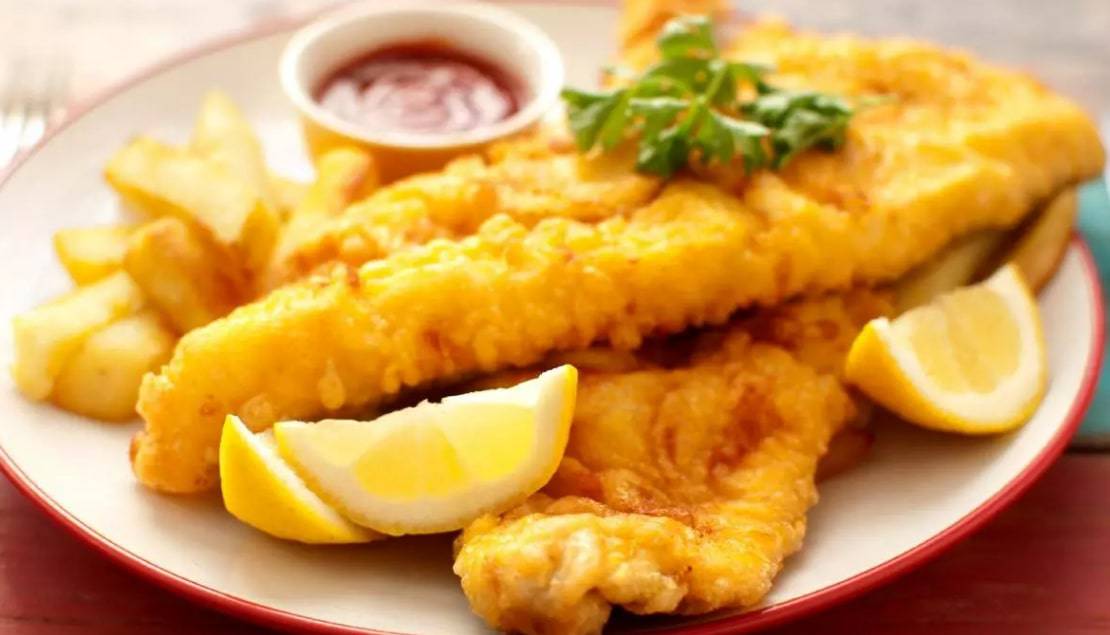The post Traditional Foods Of Australia and The History appeared first on TheAussieway.
]]>From ancient culinary traditions to current flavour fusions, Australian food represents a history of adaptation, creativity, and cultural interchange. As Australians continue to celebrate their unique heritage through cuisine, they help to create a healthy eating environment that parallels the country’s natural beauty.
Land Down Under is famous not just for its breathtaking scenery and distinctive species, but also for its vibrant and diversified cuisine. This large continent-country is a blending pot, influenced by everything from its long and rich history to the waves of immigration that have defined its cuisine over the ages. Australian cuisine reflects the country’s rich history, diversified society, and unique terrain.
Learning about the evolution of Australian cuisine will help you gain a deeper understanding of the cultural, geographical, and historical factors that are responsible for shaping the food culture of the country.

Food in Australia

One of the most iconic foods in Australia is the meat pie. This handheld snack or meal consists of a pastry shell filled with minced meat, most commonly beef, and savoury gravy. It is often enjoyed at sporting events or as a quick and satisfying lunch option.
Another famous Australian food item is Vegemite. This dark, savoury spread made from yeast extract has a distinct and acquired taste. Australians often spread it on toast or use it as a flavouring in sandwiches. Vegemite has become an integral part of Australian culture and is often associated with breakfast or a quick snack.
Australia also boasts unique desserts like lamington. These sponge cakes are cut into squares, dipped in chocolate icing, and then rolled in desiccated coconut. The result is a delightful treat with a chocolatey and coconutty flavour, often enjoyed with a cup of tea or coffee.
Here are some key elements of Australian cuisines:

Image Credit: https://travelforfoodhub.com/australian-culinary-tradition/
Meat: Australia is known for its high-quality meats, particularly beef and lamb. The tradition of barbecuing is a significant part of Australian culinary culture. Sausages and steak are commonly grilled, and outdoor gatherings often feature barbecue feasts.
Seafood: Given its extensive coastline, seafood is a prominent feature of Australian dishes. Popular choices include prawns (shrimp), barramundi, Tasmanian salmon, and various types of shellfish. Fish and chips, a British import, are also a beloved classic.
Vegemite: A quintessential Australian food item, Vegemite is a dark, savoury spread made from yeast extract. It’s often spread on buttered toast or used in sandwiches. It has a strong and acquired taste that is an iconic part of Australian breakfasts.
Modern Australian Cuisine: In recent years, chefs have been redefining Australian cuisines by incorporating indigenous ingredients and culinary techniques into contemporary dishes. This movement has brought a fusion of traditional and modern elements to the forefront of Australian gastronomy.
Kangaroo meat: kangaroo meat is lean and packed with protein. It can be grilled, fried in a skillet, or used in stews and stir-fries among other preparation methods.
Chiko Roll: A popular fast food dish in Australia, the Chiko Roll is a deep-fried savoury roll packed with meat and veggies.
Tim Tams: Two layers of chocolate cream filling are sandwiched between chocolate biscuits to make these chocolate-covered biscuits. With a cup of tea or coffee, they are frequently relished.
Barbecue: Australians enjoy grilling, especially in the summer. Sausage, burgers, steak and grilled veggies are typical BBQ fare.
Australia’s local food scene is as diverse as its vast landscapes and multicultural population. From coastal seafood delicacies to bush tucker inspired by Indigenous traditions, Australian local cuisine offers a unique culinary experience that showcases the country’s rich cultural heritage and natural resources.
One of the highlights of local food in Australia is the fresh seafood. With its extensive coastline, Australia is home to a wide variety of fish and shellfish. From succulent prawns and delicate oysters to flavorful barramundi and Tasmanian salmon, seafood lovers can indulge in the bounty of the ocean. Whether enjoyed in a fish and chips shop by the beach or at a fine dining restaurant, Australian seafood is renowned for its quality and freshness.
Evolution of Australian cuisine
 Image Credit: https://9foodies.weebly.com/evolution-of-australian-cuisine.html
Image Credit: https://9foodies.weebly.com/evolution-of-australian-cuisine.html
Aboriginal and Torres Strait Islander peoples have had a deep grasp of the land and its resources for thousands of years, utilising native foods such as kangaroo, emu, bush tomatoes, yams, and numerous bush herbs and spices. These ingredients were traditionally used in culinary methods such as earth oven baking, smoking, and foraging. Indigenous food practices have had a significant impact on the present Australian dishes, leading to a greater appreciation and integration of indigenous foods.
The evolution of Australian food has been an enthralling journey, shaped by an abundance of historical, cultural, and environmental influences. From its Indigenous beginnings, Australian cultural food has developed over time, embracing new flavours and ingredients.
The Native Australian food encompasses a diverse range of ingredients that were used traditionally by indigenous Australian people for a thousand years. Along with a unique flavour these foods have great nutritional properties. A lot of food in Australia represents the culinary traditions and dishes that are passed down through generations, which have a cultural and historical impact.
Traditional Australian foods include the following:
Damper:

Damper is a basic bread baked in the Australian bush by European settlers and drovers. It is produced using simple components such as flour, water, and occasionally milk or butter. The dough is traditionally cooked over an open fire or in a camp oven, yielding dense and crusty bread.
Grilled Kangaroo Meat:

For thousands of years, Indigenous Australians have consumed kangaroo meat. It is a lean and gamey meat that may be served in a variety of ways, including grilling, roasting, and being used as mince in meals such as kangaroo burgers. Kangaroo meat has gained prominence as a sustainable meat choice due to its nutritional content.
Barramundi:

Barramundi is a well-liked fish that comes under the traditional food of Australia. It has a delicate flavour and crisp white flesh. Barramundi is frequently eaten with fresh vegetables or a citrus sauce and can be prepared in a variety of ways, such as grilling, baking, or pan-frying.
Australian Bush Tea:

It is traditionally made using the Billy Tea method. It entails adding loose tea leaves to boiling water in a billy can, a small, lightweight metal container. After being prepared over a campfire, the tea is frequently paired with damper or other wild edibles. For indigenous communities, it holds cultural significance and is used for medicinal and nutritional benefits as well.
Pavlova:

How Pavlova originated is still a debate between Australia and New Zealand. The exact origins cannot be shown correctly, but this iconic dessert is named after the renowned Russian ballerina Anna Pavlova. The dish was created as an offering by Australian chef Herbert Sasche. He offered a modern version of the dish that was presented to her when she was on a tour of Australia and New Zealand during the 1920s and 1930s. Pavlova became popular in Australia and was a staple on many dessert menus.
Meat Pies:

Australians are meat lovers, and they are always on the lookout for meat-filled dishes to satisfy their cravings. To satisfy their hunger, they have come up with new dishes, and meat pie is one of them, which is a popular Australian food. This traditional food comes with different types of fillings, and the most basic ones include potatoes, mushrooms, meat, and onions that can please your taste buds and keep you satisfied. Meat pies are enjoyed with drinks, and these are often spotted on plates during dinner and lunch.
Fish and Chips:

It’s important to note that the traditional foods of Australia’s indigenous peoples have immense cultural significance and are closely tied to the land, spirituality, and community practices. These foods have been passed down through generations and are still honoured and appreciated by indigenous communities today.
Lamington:

Lamington is a classic Australian dessert that has a rich cultural history, and its origin is somewhat debated. The history of Lamington is quite interesting, where a cook at the government house accidentally dropped sponge cake pieces into chocolate and then coated them with desiccated coconut so cake wastage could be avoided. Lord Lamington enjoyed the pieces, and hence the dessert was named in honour of him. There are other stories behind the origination of the dish, it gained popularity in Australia in 2006 when July 21st was declared “ National Lamington Day” in Australia, celebrating this beloved dessert.
Barbeque Snags:

Barbeque snags are a short form of barbeque sausages which have a special place in Australian culinary culture and are associated with social events, outside gatherings, etc. It has been a significant part of the Aussie lifestyle and the cultural history is related to the evolution of outdoor cooking practices, immigration history, and the colonial past of Australia. Sausages were a convenient and hearty choice of food that could be cooked easily on the open flame and they also represent a laid-back and convivial culture of Australia.
Chicken Parmigiana is an iconic dish that evolved from Italian American culinary traditions, and now it has made its way onto the menus of Australians. Australians like this dish, and it is common in the country’s pub culture. The journey of this dish from Italian immigrant communities to Australian pubs manifests how food can transcend cultural boundaries and be a vital part of local culinary landscapes. It is often served with pasta and is a satisfying dish for those who enjoy the flavours of melted cheese and tomato sauce.
Native Australian food

Image Credit: https://en.wikipedia.org/wiki/Bush_tucker
After traditional cuisine, there is Australia’s native cuisine. Native Australian food, often referred to as “bush tucker,” encompasses unique plants and animals. These foods have sustained Aboriginal and Torres Strait Islander communities for thousands of years and are now gaining recognition in modern Australian cuisine due to their distinctive flavours and nutritional benefits.
Whether you’re exploring the tangy delights of native fruits like quandong and finger lime, savouring the lean and flavorful kangaroo and emu meats, or indulging in beloved classics like meat pies and Vegemite toast, Australia’s culinary landscape offers an enticing culinary journey for food lovers, a testament to its cultural heritage and innovation.
Final Thoughts..
Thank you for showing an interest in Aussie food and wanting to learn more! Due to its diversified population and abundance of premium ingredients, Australia has developed a distinctive culinary culture. It does not matter whether you prefer fusion cuisine, traditional Australian cooking, or international flavors; you will always find something that appeals to you in Australia.
The post Traditional Foods Of Australia and The History appeared first on TheAussieway.
]]>